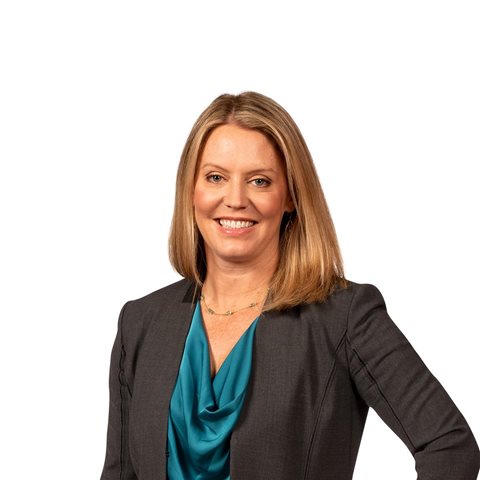For years, women have been fighting for faster career advancement and more equitable representation at work. On this week’s episode of The McKinsey Podcast, McKinsey senior partners Alexis Krivkovich and Lareina Yee talk with global editorial director Lucia Rahilly about the 2023 Women in the Workplace report—and specifically, our newest research on where progress is happening, where it’s not, and what leaders need to do differently to accelerate the pace of change.
This transcript has been edited for clarity and length.
The McKinsey Podcast is hosted by Roberta Fusaro and Lucia Rahilly.
Myth #1: Women are losing their ambition
Lucia Rahilly: Ambition has long been a charged construct for women, in part because it was used in an almost pejorative way. What did the research tell us about women and ambition?
Alexis Krivkovich: I think ambition is one of the most interesting insights from this year. What we clearly see from the data is that the pandemic didn’t dampen women’s ambition. In fact, it grew through that period. Eighty percent of women want to be promoted, which is exactly the same as what we see for men.
This is up ten percentage points from where we were prepandemic. Nearly every single woman that we surveyed—96 percent—said their career is important to them. That’s incredible. Women under 30 years of age are especially ambitious: nine in ten women want to be promoted to the next level, and three in four want to get all the way to the very top. And that ambition is highest among women of color.
Lucia Rahilly: Do we have a sense of why ambition was buoyed up during the pandemic, particularly among intersectional women?
Alexis Krivkovich: I think one aspect is the introduction of more flexibility in the working model. It’s something the pandemic sort of forced on us, and postpandemic, every employee wants to see flexibility as part of the permanent state.
That’s really unleashed and enabled more ambition for women in particular. Without flexibility, we believe women’s attrition could have been 30 percent higher through this period. So having a working model that capably functions with the same scope of work and expectation is allowing women to feel like they can do so much more.
Want to subscribe to The McKinsey Podcast?
Lucia Rahilly: Lareina, do you have anything to add?
Lareina Yee: Our research looks over the last nine years, and in every year that we’ve looked at women in the workplace, we’ve shown that women have that ambition and drive to be leaders in their organizations—something that Alexis and I call positive ambition.
As we have fully come out of the pandemic, we have both a different working model and a return to some of our norms. When we look at this year’s data, it’s no surprise to see women’s ambition pop back up because it’s always been at a high rate.
Lucia Rahilly: Do you think women are less inhibited about articulating that they’re ambitious? There was this period where women’s ambition was viewed as almost a criticism.
Lareina Yee: It may be more that your comment is a reflection of society and perhaps a misunderstanding or a misperception that ambition from women is something negative, whereas ambition from a man is something positive. In fact, men’s and women’s ambitions are the same. As Alexis said, the ambition to be a leader, to be promoted, is the same among men and women.
The ambition to be a leader, to be promoted, is the same among men and women.
Myth #2: Workplace flexibility is a woman’s thing
Lucia Rahilly: Let’s segue now to that second myth that Alexis teed up, that it is primarily women who are looking for flexibility in the workplace.
Here’s a reading of a quote from one of our research interviews. It comes from a White man at the director level who works in a hybrid context.
He says, “Our house is crazy. We have a dog and four kids. Being able to juggle all that is going on in my personal life by having flexibility at work is extremely important. In my perspective, it leads to a healthy balance between work and personal life.”
What does the research tell us about the way gender affects preference for flexibility?
Lareina Yee: The power of that quote is that type of pressure, that type of feeling is the same for men and women. Flexibility helps everybody.
Alexis Krivkovich: The other thing I think is interesting about this debate around increasing flexibility in the working model is that 80 percent of men and women say they feel most productive when they have that focused time and can do some amount of that by working remotely.
That doesn’t mean they don’t see the value in working in person. In fact, Gen Z more than anyone says they recognize that you have to get into a space and interact with colleagues to get some of the biggest benefits of mentorship, sponsorship, and learning and observing how the job is done. It’s important to be part of, and to contribute to, building a work culture. But it’s worth recognizing that this idea, that there’s a loss by embracing this flexibility, is false.
Lareina Yee: It’s also helpful to say that flexibility doesn’t exclusively mean “work from home.” That’s one format of flexibility. Flexibility may be the ability to shift your hours. Flexibility may be having your Fridays in your apartment and your Mondays through Thursdays in the office. It may be that in the summers you’re in different cities.
The core of flexibility is that employees have more control and more agency in when they work and how they work. You’re focused on the output, not necessarily clocking in from 8 to 5 to prove that you’re actually being productive.
Lucia Rahilly: Many leaders are now pushing for employees to be in the office more frequently. Whether that takes hold or not remains TBD, but there seems to be a trend toward more in-office work.
You’ve said that 36 percent or more than a third of women say they would have had to have taken a step back had they not had the flexibility that they had.
Alexis Krivkovich: It’s a funny thing. I think for so many companies right now, we’re caught betwixt and between. For a lot of reasons, it makes sense to have some of that in-person collaboration. But as we start pushing for more return to the office, so many employees are feeling frustrated when they come in because they say, “I commute to the office to do the same work I can do remotely. We haven’t changed anything about what’s happening when I show up in person to make it feel that it clearly has some benefits.”
I think [where to work] will be one of the big questions for companies looking forward. And how do they do it in a way where it continues to be equitable? Because the reality is, the in-person workplace environment wasn’t equally enjoyable to men and women previous to the pandemic.
We see in our data that it’s still not equitable. Men still describe a better experience when they show up on-site than women do, in terms of getting connectivity, feeling in the know, building their network. And that’s something that needs to change.
Lucia Rahilly: Can you say more about what is driving that delta between men’s and women’s experiences in the office?
Alexis Krivkovich: A third of men say they feel like they get better and more useful feedback when they show up in person. But less than a quarter of women agree with that statement. And that’s an example of the type of differences we’ve long seen in the full nine years we’ve looked at this question.
Furthermore, it seems the feedback men receive is more actionable for them than for women. So we’re telling people to come back in to get more benefits, but then if we perpetuate not making good on that promise for everyone equally, it will just create a bifurcated path where men start to see a value in something that women don’t. And women ultimately lose out because of it.
Myth #3: The glass ceiling impedes advancement
Lucia Rahilly: Let’s talk about the third myth, which is that the biggest barrier to women’s advancement is the proverbial glass ceiling. Here’s a reading of a quote received from a C-level Black woman working hybrid.
She said, “I’ve always done every task, every project ahead of schedule and under budget. And I still couldn’t get the promotions I saw my White colleagues getting.”
What did the data tell us about what’s at play in situations like this, and what is really holding women back?
Alexis Krivkovich: The biggest inequity in advancement remains the broken rung—the very first step up into a manager position. Proportionally, for every 100 men we see leap forward, only 87 women advance. And if you’re a woman of color, it’s 73. If you’re a Black woman, it’s only 54. And it starts at the very beginning of a career. The challenge with this is that it sets up a slower and harder pathway to progress forward.
Companies just don’t recover from that, and it’s what we see in the pipeline. The reason we only have 28 percent women in the C-suite is because we aren’t building that leadership path at the very beginning of [women’s] careers, to create a pool of talent that would be available and ready for those opportunities when they open up.
Lareina Yee: I’d love to offer a ray of hope and despair at the same time. When we look at the experience in the broken rung of Black women, one of the things that we saw, in the two years after George Floyd was murdered, was that the broken rung for Black women, that gap, almost closed completely.
Unfortunately, a bit of the pit of despair is that this year the data slumped back down. And so, one of the really important things is that we can improve the broken rung, but it really requires a level of focus and measurement.
Breaking the broken-rung cycle
Lucia Rahilly: What else is causing the broken rung to be so persistent? We talk about it every year, but generally, what can be done that’s different?
Alexis Krivkovich: I think we just need more discipline in managing these early promotions and treating them with the same care that we put toward our most senior openings and opportunities. Have we really thought about the criteria for “ready now,” for early promotions?
A lot of times that criteria is based on the people who have sat in the seat before you. We don’t encourage a diverse slate to apply. We just see who raises their hand. So a lot of companies find they’re on the receiving end of who feels confident. When women don’t have the same degree of mentorship and sponsorship and support, they don’t feel confident enough to go for it.
We just need more discipline in managing these early promotions and treating them with the same care that we put toward our most senior openings and opportunities.
Lucia Rahilly: Alexis, we’ve talked in the past about women having to be overprepared in order to put themselves forward for promotion, statistically speaking, whereas men are more likely to put themselves forward when they are underprepared relative to women. Anything on changes at other levels of the ladder? Any positive or negative signs versus last year higher up beyond the first rung?
Alexis Krivkovich: Well, the biggest bright spot this year was the success we’re finally seeing all the way at the top in the C-suite. It’s taken us nine years to get there. But we’ve moved from less than one in six women in the C-suite to more than one in four. The challenge behind that is it hasn’t been equally shared for women of color for all the reasons we’ve talked about. And so that one in four for women overall is only one in 16. If you’re a woman of color, you don’t yet see yourself represented in the majority of companies’ top leadership teams.
And those seats aren’t filled equally across all role types. You’re more likely to see those women at the very top sitting in critically important staff roles like HR, head of strategy, chief marketing officer, which are important and very valuable, but you don’t see them equally as the chief technology officer, the CFO, the head of the business units, the COO.
Part of why that matters is that one set of those roles tends to have more budget associated with it, more employees under the remit, and is more likely to ladder to CEO positions and board seats. We need to get that representation more equally shared for all women and more equally shared across all roles at the top.
Myth #4: Microaggressions don’t matter
Lucia Rahilly: The last myth relates to microaggressions and specifically to the notion that microaggressions just aren’t that big a deal. Here’s a reading of a quote from a Latina manager.
“When I was climbing the ladder to executive director, I felt that the only way I could be successful was to do everything I possibly could to assimilate. I would watch how the White female leaders would dress, how they would communicate, how they would interact. I felt I needed to look like that, sound like that, and model that.”
What did our research tell us about the impact of microaggressions on women at work?
Lareina Yee: Microaggressions are those everyday slights. On the face of it, a lot of people will say, “Oh, well, that was just one comment that was a little bit off. That person didn’t really mean it.” But I think what’s important is to understand that a basket of microaggressions have a macro impact on a woman’s career.
Women are 1.5 to 2 times more likely to experience a microaggression than men. Examples of microaggressions are being mistaken for someone of the same race, color, or gender, or someone with the same hair. It could be a manager not defending your work. There are a series of these things that happen. They often happen multiple times a day, multiple times a week. It happens to men too, but the key thing is that women are much more likely to experience it. And that’s something we’ve seen year over year. And the second piece is, what’s the impact of that? And one of the things in the behaviors that we looked at this year is how women who experience microaggressions will self-shield to protect themselves from these types of slights. They are 3.3 times more likely to consider leaving their organization, and they are 4.2 times more likely to feel burned out.
One of the things that you often hear when you talk to women is that the experience is almost like an unexpected missile in the meeting. You’re sitting there. You’re presenting. You’re focused on the business and all the preparation you did. And suddenly, someone takes credit for your idea. And maybe later in that meeting somebody else says, “Oh, I didn’t realize. You don’t look like you could possibly be a VP, you look so young.”
And what you’re trying to do is just deliver on the work. But what happens is, you tend to have a simultaneous feeling of, first, having an impostor syndrome moment, and second, feeling like you have to show the positive stereotypes of your gender, or if you’re a woman of color, your race.
So, how do we fix the system and create more awareness so this doesn’t happen? One of the actions we’ve talked a lot about is allyship. Because when those things happen, that unexpected missile in the meeting, one of the best things that a colleague can do, a man or woman, is redirect that microaggression.
Working from home empowers
Lucia Rahilly: Alexis, has remote work affected the prevalence of microaggressions at all, either positively or negatively?
Alexis Krivkovich: If you net it out, most women, particularly women who face higher microaggressions, such as women with intersectional experiences, women of color, those with a disability, or who are LGBTQ+, will say that those microaggressions lessen when they work virtually.
And I think there’s some pretty obvious reasons why that would be true. Everybody can have a virtual seat at the table when you have a remote meeting. Everybody shows up the same size on the screen. You can use tools like the hand raise to create more balance in a virtual-meeting discussion. And there is something about the future state of flexibility that has the potential to create more balance for women’s experiences.
Lucia Rahilly: I think we’ve all been in situations where we’ve experienced microaggressions. Any personal anecdotes that you might share for the benefit of others on a microaggression that you have been the object of, and how you managed it?
Alexis Krivkovich: Recently, I was asked to present at a conference, a senior-executive event. It was an intimate group of 40 to 50 leaders. I stepped into the room, and I realized I was the only woman, which happens to me less and less, thankfully.
But every once in a while, I have a moment where I think, “Oh my gosh, it’s 2023, I can’t believe this.” I was standing to the side because I was waiting to be introduced and someone else was doing some pre-speaking to kick things off. They were having issues with the sound and the microphone. Out of the blue, the speaker turned to me and said, “Could you please get me a new microphone?”
I was so stunned because I thought, “Well, I’m a senior partner at McKinsey. I don’t know where the microphones are.” But what was so shocking to me is how quickly I felt embarrassed, and how quickly I felt undermined in my right to be there, my credibility to be speaking and commanding the room.
And it wasn’t about intent, right? I don’t think he was singling me out and thinking actively, “There’s the woman, I will make the woman do this.” But the fact that it was his default just took the wind out of me. Microaggressions undermine someone’s ability to show up as their best self. They undermine a person’s confidence and their belief that they do have a reason to be at the table. Nearly a third of women will say they don’t speak up or share an opinion, because they don’t want to appear difficult or contrary to the discussion in the room, because they feel like it’ll single them out.
Guidance for future leaders
Lucia Rahilly: Let’s talk about next steps. It can sometimes feel like we have been circling in this same cul-de-sac for a long time. It can be frustrating. What is your best advice for leaders who are looking to finally put the pedal to the metal?
Alexis Krivkovich: My encouragement to leaders at this point is, don’t get comfortable in the aggregate numbers. Don’t explain away why there must be good reason for this, that, and the other. Use the data. Dig in. And really commit to working the issue the way you’d work a sales pipeline or an operational issue or a growth opportunity: with intensity and conviction that you’re just going to keep going until you get it right.
Regarding the broken rung, you can measure it. You can see where it’s happening team by team, promotion by promotion. Get in there, go back, do the postmortem. When I get in and I ask companies about it, when I see the issue in their data, they’ll generally admit, at best, that they’re doing that in a haphazard way. And at worst, they’re stopping at the problem statement.
Lucia Rahilly: If there were one piece of advice you’d give to young women who are coming up in their career now—junior women—what would it be?
Alexis Krivkovich: As someone who has three daughters, I think about this question quite a bit. I think it would be twofold. First, don’t look at the pattern at the top and think that’s any signal of your skills and ability to be sitting there in one of those seats. We will only get change if we continue to stick with it and persist.
And the second one is to use the data and the fact base we now have to challenge the structural obstacles, the bias in the system when it presents itself. I think that too often we allow things to be explained away. But by pushing and challenging organizations to really look at the situation and say, “OK, you passed me over, and you said it’s because I didn’t have X. How do I get X? What’s the opportunity that you suggest I pursue to get X? Did the person you choose have it? How did they get it? How do I get the opportunity that you’ve helped create for them?” I think we have to ask those tough questions and keep the pressure on.




